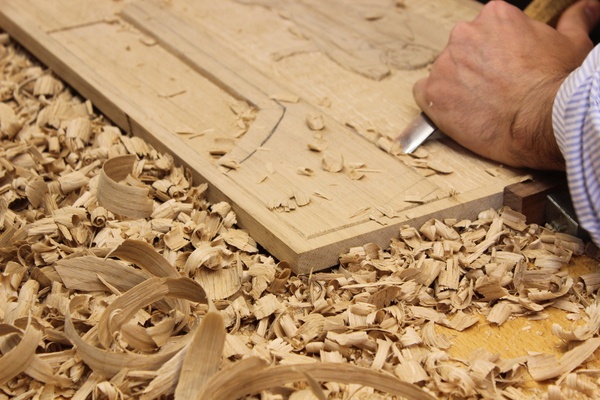A response to the state of the decorative arts in Britain in the wake of the Industrial Revolution, Arts and Crafts Movement furniture is part of the internationally recognised canon with roots in fine art and decorative homeware. At once an aesthetic and intellectual cultural shift, the Arts and Crafts movement advocated respect for the natural world, the preservation of craft skills and anti-industrial social reform. Although aesthetic trends pivoted once again in the 1930s as architects and designers embraced Modernism, many of the values of the movement have been retained to this day.
What are the principles of the Arts & Crafts movement?
The principles we have come to understand as typically ‘Arts & Crafts’ in nature were inspired by the writings of critic and philosopher, John Ruskin, architect, Augustus Pugin, designer, William Morris and artist, Walter Crane. Many of these great figures of England’s visual culture were members of the Art Workers’ Guild, a key founding society of the Arts & Crafts movement in Britain. For many years, Luke Hughes, the founder of Luke Hughes & Company was Chairman of Trustees at the Guild, a marker of his commitment to the values of the movement and its significance to his professional identity.
Our work is important too and intimately linked with the English Arts and Crafts creative output. In each of our projects and products is a distillation of something unmistakably true to the movement’s ethos. The Arts and Crafts furniture characteristics of authenticity, a commitment to materials and construction, and a respect for the craftsperson ushering each piece into being are embodied at Luke Hughes & Company. The brand itself is built around the endless capacity of engineering precision at the hands of a skilled craftsperson, elevated for scale with digitally-driven precision machinery.
It is correct to say that the Arts and Crafts movement posed a rather strong critique of industrial labour. As technology advanced with the dawn of the Industrial Revolution, machines replaced people, catalysing nationwide anxieties about the economic uncertainties ahead, and of course, the very existence of the distinctly human act of creating.
However, the argument that Ruskin and Morris (and the rest of the proponents of the Arts and Crafts movement) were opposed to such industrial innovation is reductive and fails to understand the motivations behind the cause. “It is not this or that tangible steel or brass machine which we want to get rid of,” explained Morris in an 1888 lecture, “but the great intangible machine of commercial tyranny, which oppresses the lives of all of us.” The aim of the movement was not to obstruct technological progress, but was instead to prevent the dehumanisation of working people in the ‘dark satanic mills,’ factories and furnaces of the Industrial Revolution.
How important is technology to the future of Arts and Crafts movement furniture?
Thanks to the democratic accessibility to modern-day technology, we are able to combine fine craftsmanship with scaled-up production to fulfil contemporary demands in the furniture market for Arts and Crafts style furniture. What is particularly important is the way this technology has given more people access to more high-quality, authentically made furniture.
Our Coventry Chair, as seen at the Chapel of the Resurrection at Valparaiso University, Illinois, for example, a remastering of the seating for Coventry Cathedral designed by utility designer, Gordon Russell’s brother, R. D. Russell, with better ergonomics than the originals. Each is the product of the creative direction of a skilled craftsperson and highly sophisticated, digitally controlled machinery. The involvement of machinery of this kind does not displace the reverence for the role of the craftsman in each piece’s creation, who must still choose the materials, assemble and finish the product by hand. It is fair to say Luke Hughes & Company is very much true to the spirit of Arts and Crafts movement furniture, but a highly modernised and mechanised version, supporting the preservation of furniture defined by its authenticity and cultural provenance.



